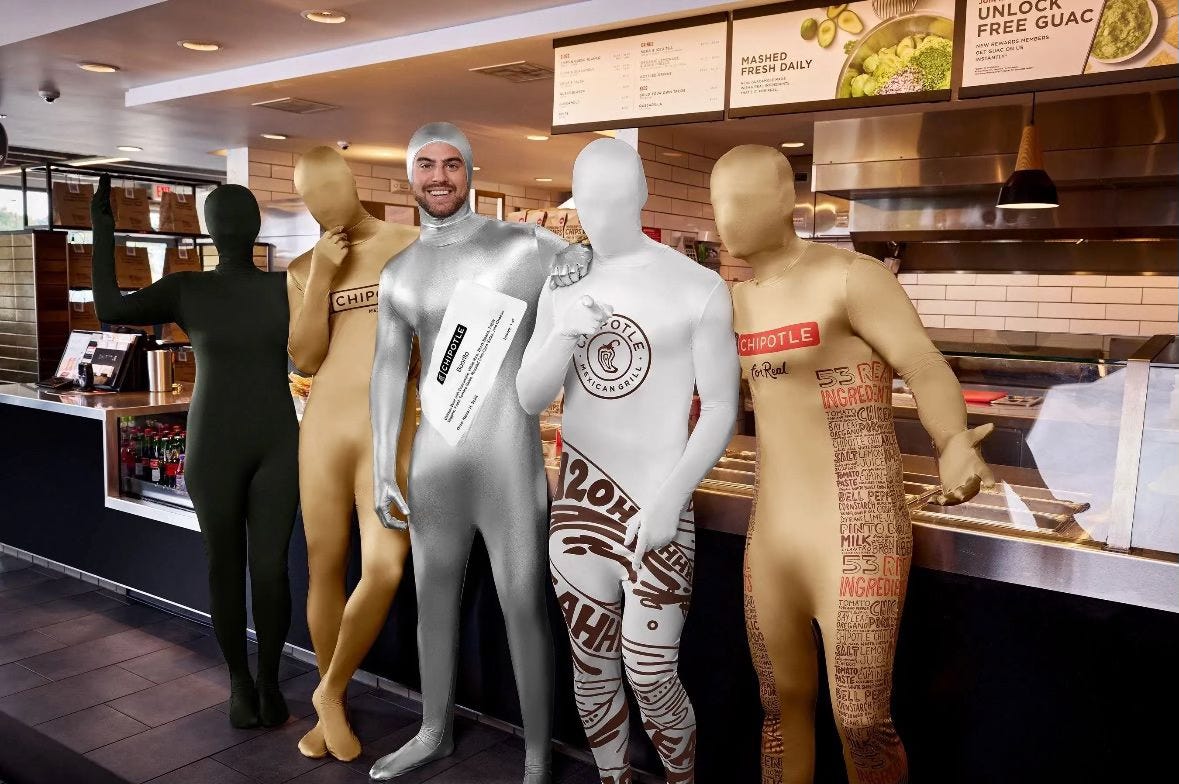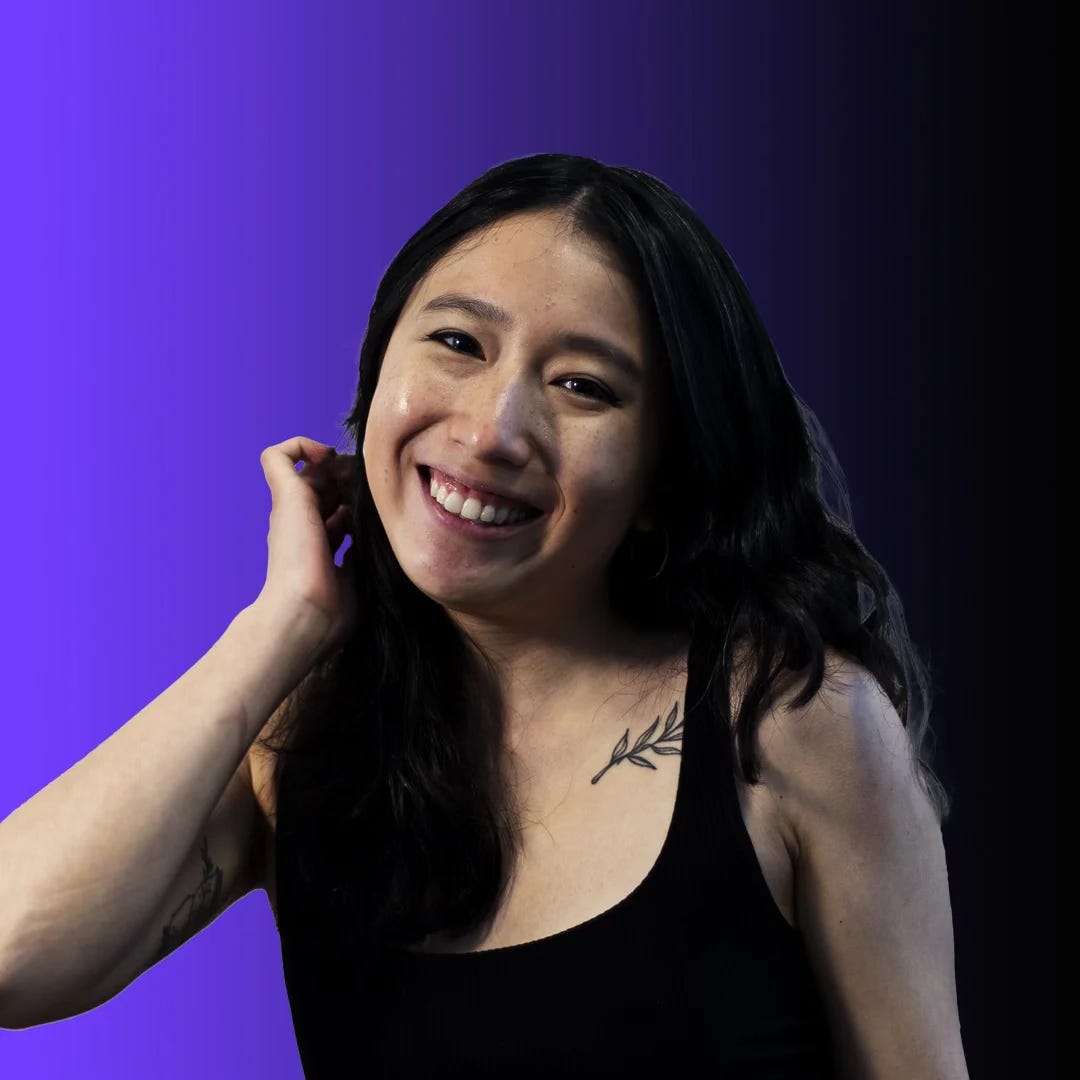Memes are dominating Halloween -- turning spooky into sharable
📰 NoGood News | Vol. 79
Hi NoGoodies,
Before we jump into another round of the NoGood News, here's a quick TL;DR of what's below:
Chipotle wants you to be a burrito this Halloween
Here's how Chipotle turned their vitality into Halloween costumes
Design a viral product that drives growth
Learn the strategies that lead to explosive growth and widespread brand recognition
Making an AI logo isn’t as easy as you think
Here’s why Open AI faced backlash for their potential new logo redesign
Ready? Let's get into it.
🌯 Chipotle wants you to be a burrito this Halloween
Here's how Chipotle turned their vitality into Halloween costumes
Chipotle collaborated with Spirit Halloween to release unhinged costumes like a Chipotle to-go bag, water cup, and fork.
In other words, it's a viral moment waiting to happen.
Cultural relevance and creativity are crucial drivers behind the choices Gen Z consumers make — and Halloween costumes are no exception. 🎃
Chipotle’s marketing strategy found their success around tapping into consumer behavior and online conversations.
Remember when they poked fun at consumers filling their water cups with lemonade by releasing a "water cup" candle?
Or when they made a TikTok directly responding to the fact that people were filming their orders being made to get bigger portion sizes?
Chipotle’s odd yet clever costume collaboration is yet another example of how they're able to poke fun at themselves while participating in existing online conversations.
Social media is changing the ways consumers approach Halloween — and brands should adapt to this too.
What do you think about Chipotle’s Halloween costumes?
🎨 Design a viral product that drives growth
Learn the strategies that lead to explosive growth and widespread brand recognition
What is product virality?
A “viral product” can be any offering that spreads like wildfire throughout its target audience.
What sets a viral product apart is its remarkable ability to grow organically with minimal investment in traditional marketing campaigns.
Creating a product that goes viral isn’t a stroke of luck; it’s a result of careful planning, strategic thinking, and a deep understanding of your target audience.
Shareability is the linchpin of viral product design — it’s what allows your users to become ambassadors for your product.
Here’s how to optimize for shareability:
Social integration: Make it effortless for users to share your product on various social media platforms.
Incentivize sharing: Offer incentives or rewards for users who refer others to your product. This can include discounts, exclusive content, or early access.
Create shareable content: If your product involves content creation, enable users to easily generate and share their content within your platform and beyond. User-generated content can have a significant viral impact.
Leverage user networks: Encourage users to invite their friends or contacts to join your platform. This network effect can lead to exponential growth.
While designing for virality, it’s essential to strike a balance between short-term and long-term success. Some strategies may lead to quick spikes in user growth, but sustaining virality over time requires a product that consistently delivers value and engages users.
Maintain a user-centric approach, gather feedback, and iterate on your product to enhance the user experience continuously.
⚫️ Making an AI logo isn’t as easy as you think
Here’s why Open AI faced backlash for their logo redesign.
What makes a good AI logo?
The creator of OpenAI is facing backlash for their logo redesign – from their own employees. 🫣
Their signature spiral logo is potentially being redesigned as a plain black circle.
Open AI employees felt the circle lacked creativity and looked ominous.
But what’s so wrong with a circle?
OpenAI leadership believes the black circle symbolizes precision, potential, and optimism, but it actually functions somewhat like a Rorschach test.
The black circle compels users to project their feelings about the company based on how they interpret the symbol, despite their intentional depiction.
AI tech already doesn’t have the best public image due to fictional movie depictions.
The thing is: it’s hard to formulate the right image for what AI looks like.
While their current spiral logo was meant to symbolize intelligence and transformation, a black circle embodies that threatening, menacing feeling that's already commonly associated with AI.
What do you think of OpenAI’s logo redesign idea?
🎙️ Q&A with an expert
A bi-weekly interview series with the best in the game
Q: How do you think Gen Z’s purchase decisions differ from previous generations?
A: Gen Z consumers aren't being convinced by ads anymore. As a generation that prioritizes transparency, authenticity and trust above all, the way to appeal to Gen Z is through organic content. Unlike previous generations, Gen Z relies heavily on peer recommendations, user-generated content, and opinions they find relatable — which also coincides with the growing relationship between short-form video and shopping. This generation also gravitates toward personalized, interactive experiences, such as engaging TikToks, Instagram Stories, and community-driven platforms where they feel like they’re a part of the conversation rather than just the target of a sales pitch.
Q: Can you tell me more about this growing relationship between short form content and shopping?
A: There’s a growing relationship between short form content and shopping that's heavily influenced by TikTok Shop. Knowing that Gen Z purchase decisions are already heavily influenced by content, platforms like TikTok shop allow users to shop directly through the app, meaning users can go from watching a video to buying the product with just a couple of taps. It's interesting to see how other major retailers are hopping onto this insight as well. Amazon recently launched a new TV show called "Buy It Now", which show lets people pitch their product ideas to a rotating panel of celebrities. If their products are picked, Amazon will sell them in a special section called the "Buy It Now" store. They're essentially playing into the content game by understanding the shifting expectations of what it takes to sell people a product.
✍️ We wish we wrote this
A curated list of the past 2 weeks’ must-read articles:
How absurd and unhinged is your brand willing to be?
Elon Musk’s robotaxi dream should stay a dream
Consumers are going to see less celebrity ambassadors thanks to athletes
👀 Keeping up on the socials
Because we know you like to stay in the know:
Dragons Den just spilled the hottest tea — bubble tea
If the office were The Sims
Terrifier 3 used vomit as a marketing strategy
🔥 Trend Radar: Blow up or fall behind
The trending topics, sounds, and formats to key and eye on:
Subtle foreshadowing: your most embarrassing moment on blast
Then I go and spoil it all by saying something stupid like…
I lied, you’re gonna take pictures of me
🚀 Ready to meet your NoGood partner?
Tell us where you are and where you want to be — and we’ll help get you there.





